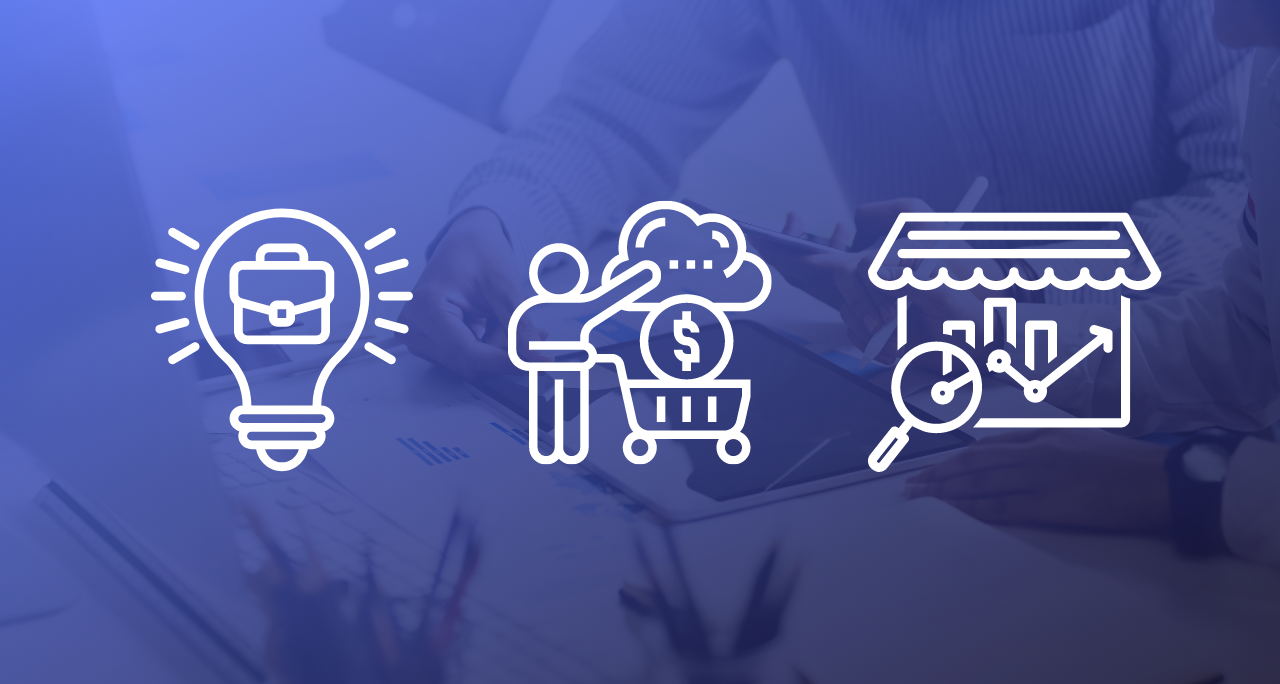Of the many changes that the pandemic has brought to the global economy, it could well be that the expanded B2B marketplace is the most consequential. During the pandemic, many firms moved their operations online and moved all of their staff to remote working arrangements. This created vast new opportunities for B2B eCommerce because suddenly a huge number of businesses had to find other means of selling to their customers, and – on the flip side – their prospective clients had the time, capability, and inclination to look beyond their traditional suppliers.
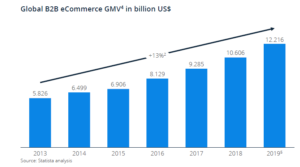
For other businesses – namely those that could provide innovative, high-quality products and services – this led to rapidly increasing sales. It encouraged still other businesses to take their first steps into B2B eCommerce, and to start to recognize the value of this channel.
Alongside these opportunities, however, it’s also important to recognize that the B2B market is a challenging place. It is also particularly true at the moment, as the long tail of the pandemic continues to drive new entrants into an already highly competitive market.
Still, these are challenges that can be overcome. And in this guide, we’ll show you how.
The changing B2B space
First up, it’s important to understand what the B2B market actually is, how it works, and how it is changing. Recent research into how established B2B executives see their market is revealing in this regard.
First and foremost, established B2B brands are aware that the pandemic has brought a lot of pressure onto their customers, who are looking to reduce their expenditure: 72% of respondents in a 2020 survey say that “preserving cash” describes their customers’ mindset in some way. Almost the same number (65%) say their customers are still looking for unexpected opportunities to strengthen their position during these times.
The way in which B2B leaders are responding to these pressures is also telling. Successful B2B companies have long understood that in this marketplace, it is intelligence and understanding that count. As a result, many say they are now looking to intensify their data gathering, and data analytics in order to better understand their customers and, as a result, be able to provide them with more value.
Alongside this increased focus on leveraging data, these companies are also looking to enhance their position as thought leaders within their various sectors. This means, above all, consolidating a position in the B2B marketplace and focusing – again – on adding value to their customers and prospective buyers through education and knowledge sharing.
Established brands looking to consolidate their dominant position and new brands looking to get a foothold in B2B can learn from eCommerce trends, including those in the B2C industry, and get the main principles that will help achieve success on the market. Here are the main trends they should keep an eye on.
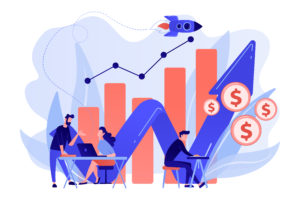
1. Look to the data with a modern data stack
In order for any company to be successful in the B2B space, they will need to build a data collection system that is able to gather genuinely useful information from a variety of sources – ERP systems, CRMs, site and/or product analytics, digital commerce platform, among others.
What happens at a high level is you gather all your data from all your systems and feed that data into a data warehouse. You have a single source of truth for your data essentially. What do you do next, though, with that data? A BI tool is common, where you have comprehensive reporting based on what the tool reads from the data warehouse.
A new trend, however, is to go beyond the BI tools, push relevant data back into the individual systems the organization is using, and make it actionable. For example, salespeople will be able to see in Salesforce if a particular client opened a marketing email – which otherwise, only marketing would be able to see in their email marketing tool, and so on.
Benefits:
- Improve understanding of the customer – pooling all data available on different client segments will paint a better picture of those whose attention you’re trying to capture, and it will show you how each of these groups acts and reacts to different tactics.
- Automate your actions – data availability will permit you to act quicker, in a timely manner, and it will also allow you to automate actions, interacting with the right people at the right moment.
- Improve personalization – buyers expect tailored messages to their situation and needs (as we’ll see further on). Getting data from prospect and user interactions will help you better fine-tune and better personalize the sale experience going forward.
It’s also notable that the value of data for B2B marketers isn’t seen primarily in their ability to react quickly or produce personalized campaigns. Rather, the value for B2B marketers is that data allows you to see market trends just a little ahead of time and to take advantage of them before the B2B competition.
In practice, this means using data not just to track historical performance but to inform forward-looking marketing activities. This predictive analysis has many benefits for B2B marketing, most notably, the ability to improve lead scoring and prioritize what sectors to pursue first. This tactic allows marketers to better understand when clients are more likely to buy, how to communicate, when to upsell, etc.
What’s more, predictive analysis in combination with account-based personalization will be particularly effective in providing the most tailored, relevant marketing materials to buyers. This also helps optimize campaigns by predicting future behavior based on past interactions and adapting accordingly.
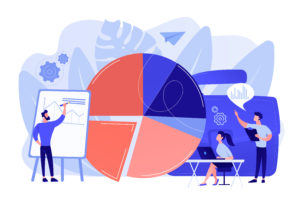
2. Understand B2B customers
In the past, B2B customers were seen as fundamentally different from their B2C analogs, but today’s knowledge points to a greater similarity between the two groups. When making purchasing decision, B2B buyers apply rational, objective factors, but also subjective, emotional factors, like their B2C counterparts. This means they don’t just pay attention to the objective side of the transaction (What are the costs? What are the contractual terms?, What are the implications on other departments?), but also to the subjective side of the process (Is this a simple process? Does this B2B competitive positioning align with my values?). Understanding B2B thought and decision patterns will help in building more relevant sales approaches.
The expectations of today’s B2B buyers have also evolved as the commerce space has grown. Whereas in the past these groups would greatly rely on interactions with sale reps, nowadays they’re showing increased appetite for self-service approaches and they’re more accustomed to doing their own research, relying more on third party recommendations and reviews. And, overall, B2B buyers have been put off by linear sales cycles, which try to fit their needs in a one-size sales process that overlooks the particularities of their business.
This means that making B2B sales implies a much more involved process of client engagement than the average B2C sale. Realizing success in this regard involves consolidating your sales approach across all channels your buyers use.
It’s also important to rely on tools and technologies to automate your work process, create error-free quotes, and better understand customer behavior and needs. These kinds of tools are ultimately what will grant you more time, as well as provide you with the knowledge you need to better serve your customers.
Buyer preferences in the segment now skew towards digital interactions and these users expect to be serviced seamlessly on these channels. Add this to the fact that a B2B buyer is usually represented by a group of individuals, not just a single user, and that their decisions are driven by a combination of rational (Am I getting the right table stakes?) and emotional (Does this bring me individual personal value?) factors, as we mentioned earlier, and the need for a clear understanding of the user profile becomes that much more evident.
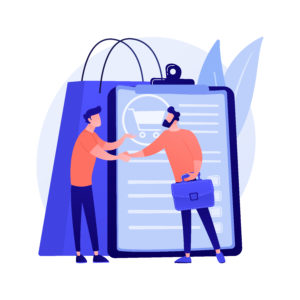
3. Focus on B2B personalization
The value of personalization has long been known in B2C eCommerce markets, but it’s only recently come to be of interest in the B2B space. This could have been on account of the general perception that the online personalization tools available to the average business are targeted for use with B2C customers.
If we look at the definition of personalization, we see that it is a must also for B2B sales: Personalization in eCommerce means tailoring the buying experience and marketing approach to the buyer’s needs or preferences. That challenge arises when the buyer is not an individual, but a team or whole company.
B2B personalization requires multi-layered personas for a diverse customer base. You may have to assess the needs of and market to technical teams, operations departments, and customer service reps all at the same time.
There is also added complexity in the types of products and applications being sold. B2B marketers and salespeople must have a deep knowledge of not only the products and their use cases but also sufficient industry expertise to communicate the benefits of these products to the different groups that make up the “buyer” in a B2B transaction.
One tactic for B2B personalization is to harness artificial intelligence (AI) to understand and predict the needs of diverse target audiences. AI helps marketers predict the preferences and behaviors of buyers through in-depth analysis, which in turn helps in tailoring marketing campaigns. AI solutions like chatbots also allow prospective buyers or current customers to ask questions about products or resolve technical challenges 24/7.
Another approach businesses can take is to embrace event-based engagement, triggered by what your customers are or are not doing in your solution or app. Whether we’re talking about onboarding emails or any other marketing campaigns, if you’re personalizing those based on the user persona, and the events (actions) performed, that’s when you can truly improve the customer experience.
4. Harness B2B competitive analysis to optimize your buying tools
While establishing your credentials within a particular sector is very important for the B2B market, this doesn’t mean that you can’t appeal to a wide customer base. In fact, recent research indicates that there are real advantages to offering business customers self-service buying tools. These should not replace face-to-face networking, of course, but should complement it.
Offering a range of buying tools is particularly important for companies new to the B2B market because this can generate some rapid revenue. Market research shows that over half of respondents would prefer to make all of their work purchases fully online since buying from a website is more convenient.
Just as establishing your credentials may require you to adapt your branding, offering buying tools to B2B customers may require you to update your business website.
There are also specific features that a website can provide to set itself apart from the B2B competition, beyond those that serve B2C users. In B2B, the whole flow is more complex, and the transaction parameters require a flexible approach. For one thing, flexible orders and customized pricing are important for the complex products and services B2B businesses provide. Pricing in B2B is often not a one-size-fits-all – buyers need the option to customize the quote they’re getting to specific business needs. They could need options to update the quantity or to get a proposal for a complete wholesale offering. They could also need flexible ordering or payment options, such as payment order settlement. Your website should cater to these expectations and welcome them with an easy-to-navigate buying experience.
And when developing competitive pricing and offerings, it’s important to be aware of what the rest of the industry is doing.
Competitive analysis research will help your marketers understand the industry landscape. You can also understand knowledge areas that might be lacking among your target audience. Providing educational content on your website targeted to customer needs at different buying stages will not only convert prospects into buyers but will also help increase customer loyalty. Whether it takes the form of landing pages, eBooks, blog posts, or explanatory videos, be sure to develop and include content that demystifies your product capabilities and the prospect needs they address. These touchpoints are also a great opportunity to further develop your brand’s positioning and to highlight how your brand differentiates from competitors.
Beyond the company website, to appeal to B2B buyers, merchants have to consider the entire universe of touchpoints that make up this group’s non-linear funnel. B2B businesses must seek to be omnipresent across the buying journey, which extends from website to apps and marketplaces, review platforms, social media channels, industry events and so on.
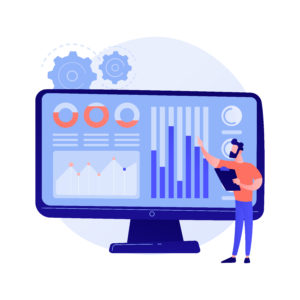
5. Optimize your B2B payment setup
B2B sales don’t always follow the classic flow of Add to basket à Pay, but rather involve a back and forth negotiation and fine-tuning process, with quotes, RFPs, proposals, demos and trials all thrown in the mix. To orchestrate this setup, automate it, and integrate data from it with your other business tools, you need an advanced eCommerce provider to ensure a streamlined quote-to-cash setup.
Configure-Price-Quote (CPQ) capabilities are needed to manage the B2B sales flow and ensure as frictionless of a process as you can for your prospects and customers. These types of solutions offer the functionalities that buyers are looking for, such as options to configure product variations, to get non-standard deals or to access custom pricing. For the merchant employing them, CPQ brings flexibility and automation in areas like configuring and negotiating price configurations, setting custom discounts and free trials, sending out quotes or getting internal approval for quotes. Other benefits include better visibility into the KPIs that matter, enhanced reporting accuracy, and more efficiency in sales reps’ times.
CPQ applications optimize and automate the sales process overall, helping your business shorten its sales funnels and close more deals faster. With this type of implementation, B2B buyers can pay the way they expect to pay – whether this involves payment at due term, settling transactions via payment links or payment orders, or having specific invoicing requirements addressed – making Configure Price Quote the differentiator that guarantees an optimized experience versus the rest of the market.
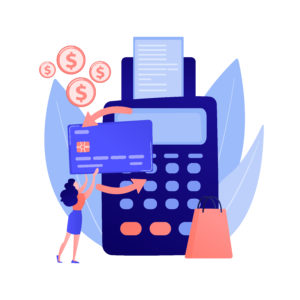
The bottom line
If you’ve made it this far, you should now have a blueprint on what it takes to simplify your B2B digital commerce and gain a competitive advantage in the market. We’ve seen the value that user data provides and the type of tech setup that will help you collect this data. Then we went over the importance of understanding your customer and why you should also stay on top of prospect and user likes, preferences, and patterns. We’ve understood the need for personalization in B2B sales, and why this approach can boost your engagement levels.
We re-emphasized the value of optimizing your buying tools, showing how inspiration comes from B2B competitive analysis and staying ahead of your B2B competitive landscape. Last but not least, we went over payment expectations in B2B and the tools needed to address buyer expectations in this area.
Finding success in B2B involves getting your bearings straight on all of these points and ultimately building that customer experience that speaks to each buyer’s expectations. Discover how working with an industry-leading digital commerce provider like 2Checkout can help you tackle these objectives and differentiate your brand on B2B markets.

